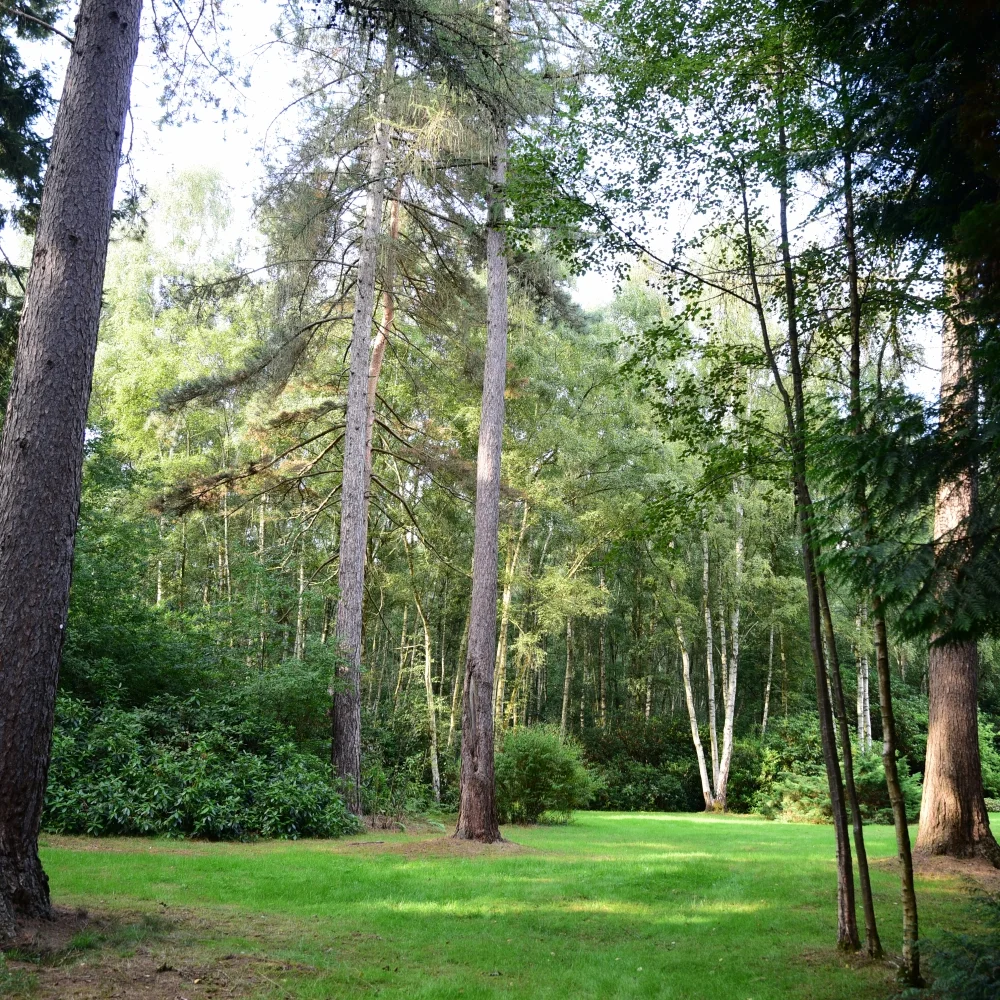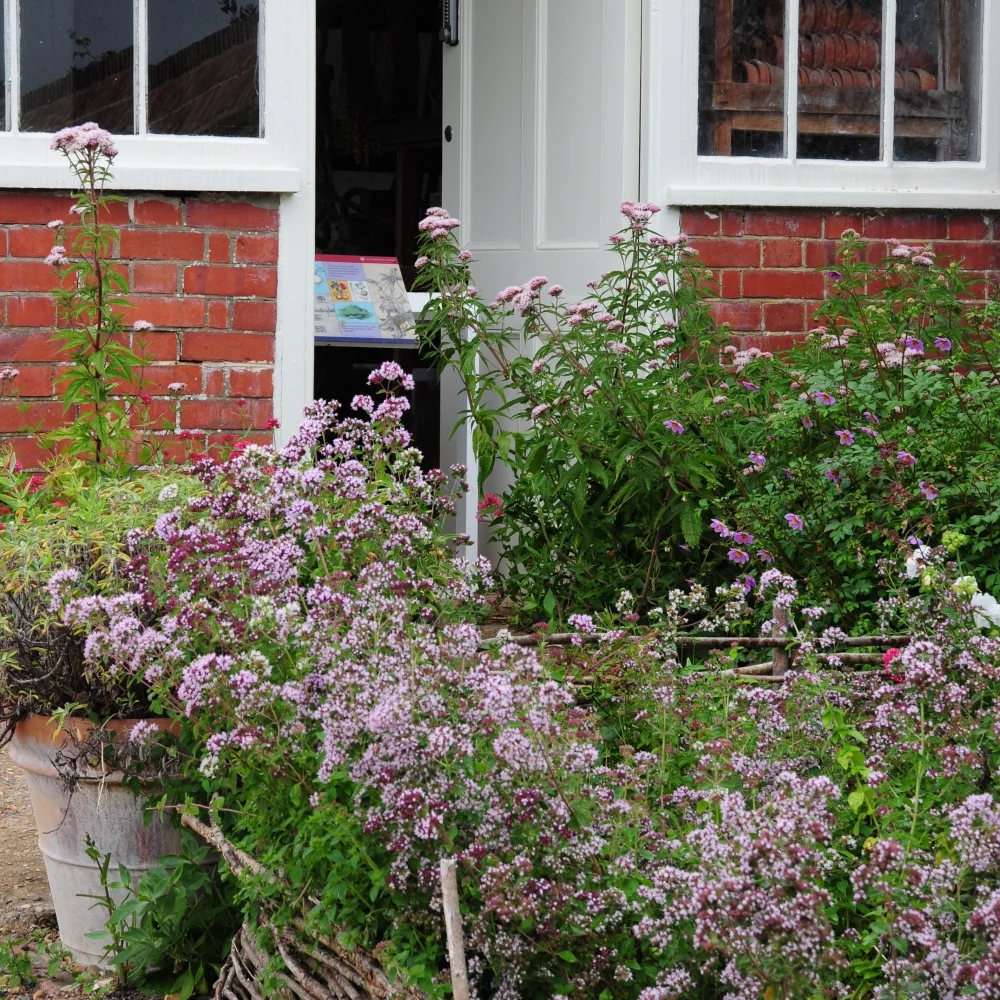The Homewood
The Homewood is a modernist house by the architect Patrick Gwynne. He was just 23 when he designed the house for his parents in 1938. Luckily for him they already owned a Victorian villa on the 10 acre estate just outside Esher in Surrey.
In another stroke of luck, his parents were able to sell a small town in Wales to pay for it. As anyone who's ever house-hunted in Surrey knows that's what it takes to secure a small bit of real estate here, then and now.
The Victorian villa was demolished and the new house located to make the most of the views of the garden, and views of the house from the garden. Patrick Gwynne lived here most of his life and left the house to the National Trust.
Gwynne made some updates to the house throughout his life but kept fairly true to his original vision. In the garden, this terrace was added in the 1970s, not an era particularly respected for its contribution to garden design (maybe concrete paving will make a comeback...?).
The angular swimming pool is a success though, and is still in use by the current tenants. The water is crystal clear, illuminating the green tiles. The later addition of a curvilinear pond with bright blue tiles doesn't work as well.
Just glimpsed from the house is a series of ponds. Gwynne was able to dam a tributary of the River Mole to create these reflecting pools and a bog garden.
The garden guide pointed out that a condition of National Trust ownership is that every garden should have a Gunnera manicata. I'm inclined to believe he wasn't joking.
Following the construction of the house some editing of the garden was carried out, with a few trees being removed or having their lower limbs pruned, to improve the views. Some of the tree stumps are used as sculptural pieces in the garden.
This part of Surrey is known for its sandy, acidic soil and this is reflected in the planting - lots of heather, pines, Japanese maples and silver birch trees.
It was Gwynne's aim to blur the boundaries between the garden and the relative wilderness of neighbouring Esher Common. Gwynne's ashes are scattered in this part of the garden.
To see the garden you have to book a house tour. The house is only open to visitors one day a week for a few months a year so you need to be organised.
A short garden tour is also on offer after the house tour. Be warned though, if you are booked on the last house tour of the day there is not much time to see the garden properly.
I was hoping to sneak round the back of the ponds get to get a photograph of the house reflected in the water but was chased down by the guide and asked to leave - this was disappointing to put it mildly.
The house was really interesting and fans of mid-century modernism would not be disappointed. The garden was much better than I expected so it was shame not to be able to spend more time in it. It would be good visit in spring when the Rhododendrons are in flower, or in October when the heather is in flower and the Japanese maples are changing colour.
You can't take any photos inside the house but you can see some here -
http://egondesign.co.uk/my-dream-home/
There are no facilities (tea, cake or loos) here but Claremont is nearby and the cream tea is excellent (thankyou Desna).
Polesden Lacey
There's been a house at Polesden Lacey, on the edge of the Surrey Hills, since 1336. The gardens, however, owe most of their present form to Edwardian society hostess Margaret Greville.
As usual, short of time, I didn't go into the house. The exterior is attractive and provides a lovely backdrop to the extensive gardens.
The gardens are amongst the most popular of the National Trust's properties and considerable effort has gone into keeping them in good condition. Many of the plants were labelled - handy at times.
The star of the garden, in late July at least, are the long borders.
I didn't pace them out but I reckon it would take Usain Bolt a good 12 seconds to run them at full speed.
Highlights of the late summer borders are the statueque Kniphofia Tawney King, Verbascum bombiferum and various Phloxes, Achilleas and Salvias.
Next to the Long Borders is the Rose Garden. Not quite my cup of tea, and at this time of year the roses are fading, but it is on an epic scale. I did like the pergola tunnels of running the full length of the walled garden.
Round the corner is the Cutting Garden. Although there was an extensive cutting garden in Margeret Greville's time, it was a bit futher away from the house than it is now.
The richness of the Dahlias and other flowers such as Verbena bonariensis tell you we are moving into late summer. Like all good working gardens, there is a gardener's bothy.
This one seemed to be more for show than work though.
I stumbled across the meadow almost by accident. Paths have been mowed through the wild flowers and ornamental trees are planted seemingly randomly throughout.
One of these was Acer griseum, also known as the Paperbark Maple - for obvious reasons.
The hunt for a loo took me past a second hand bookshop (no time for that) into the woods and finally back for one last look at the Long Border.
I would have stayed for tea and cake but I had a meeting with a new puppy which was slightly more appealing. However, I have had coffee and cake there before, quite good from memory, even though the queue was overly long.
Although the carpark was full and it was the school holidays, the grounds are so large it never felt crowded and at times I was lone in parts of the gardens. Fab. I think of the National Trust gardens I've seen this is second only to Hidcote.
Polesden Lacey - https://www.nationaltrust.org.uk/polesden-lacey


























